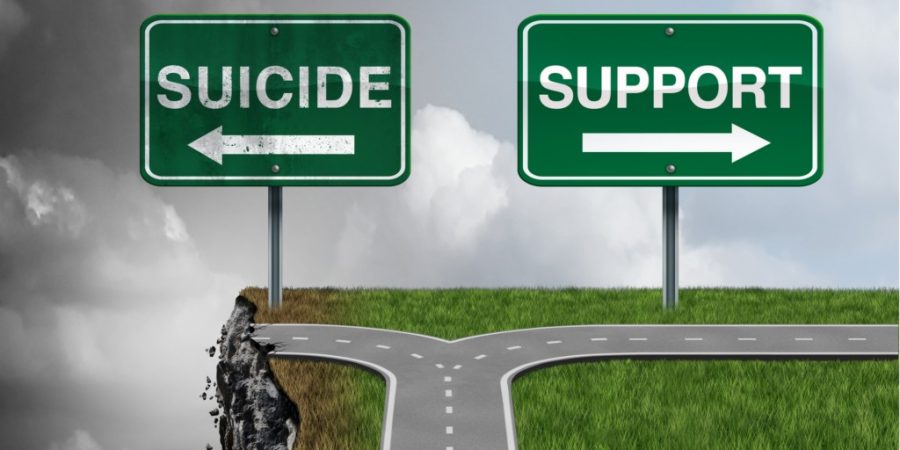
Unfortunately, veterans with post-traumatic stress disorder (PTSD) are more likely to experience suicidal thoughts. And this is a prevalent issue, with the U.S. Department of Veterans Affairs (VA) reporting that 20 veterans commit suicide every day. That’s why military personnel need to keep updated, effective suicide prevention plans.
This type of safety plan serves as a guide during a “worst case scenario” to help veterans in crisis. Because while you cannot always prevent a mental health crisis, you can plan for how to keep yourself safe during one. Today, we’re going to review the different parts of a suicide prevention plan to show you how to create your own.
Table of Contents
1. When to Use Your Suicide Prevention Plan

The first thing that your plan should cover is when to use it. When you’re in the middle of a mental health crisis, you’re likely to feel too overwhelmed to easily identify your emotions. But if you’ve had suicidal thoughts or actions before, try to remember how those situations made you feel. Then, as a guide for yourself, write down the thoughts or behaviors you might exhibit during a crisis. If you find yourself behaving in those ways, then you’ll know it’s time to move forward with your plan.
While you may not initially think to check your prevention plan during a crisis, being aware of what emotions you feel during stressful times can help you realize when you need help. For example, if you feel intensely angry and frustrated, you could remember that those are what you feel during a crisis, which can lead to you enacting the rest of your safety plan.
2. Create a List of Positives
When you’re experiencing suicidal thoughts, it’s easy to lose sight of the good parts of life. So when you’re in a healthier mindset, write down the things that you’re grateful you get to enjoy and experience. This could include relationships with loved ones, hobbies, interests, etc. The important thing is that you create a resource for yourself when you’re at increased suicidal risk.
This way, when you experience thoughts of self-harm, you’ll have a reminder to look at that can help put things in perspective.
3. Write Down Important Contact Information

Feeling isolated can do a lot to worsen your mental health and increase your suicidal risk. In order to address these feelings and prevent suicide, you can write down the names and numbers of people who have agreed to help you talk through things in the event of an emergency. Try to think of at least three trusted individuals, that way you’ll have backups if someone can’t be reached right away.
Of course, you don’t have to limit yourself to trusted loved ones. You should also write down the number of a suicide prevention resource center, like the National Suicide Prevention Lifeline at 800-273-TALK. This way, even if everybody is busy, you can still get the help and advice that you need in a mental health crisis.
4. Get Out of Your Home
Alone in your home is the last place you want to be during a mental health crisis. That’s why we’d encourage you to write down a safe, public location that you can easily get to. If possible, try to choose a location that’s within walking distance, just so you don’t have to worry about driving safely.
Locations we’d recommend for your suicide prevention plan include shopping malls, public parks, and libraries, to name a few. Anywhere can work, as long as it’s a public space where you will not be left alone. Sometimes, the best suicide prevention tool is just to remove the physical potential for suicide until you clear your head.
5. Know Where You Can Get Help
Sometimes, a mental health crisis just isn’t something you can handle alone. So write down the address and phone number of a local treatment center where you can get help. Remember, you should choose a veteran treatment facility that can address PTSD as well as co-occurring issues, like substance abuse.
By knowing where you can get help, you’ll be ready for the realities of a crisis. Trying to handle the situation on your own is admirable, but if you just can’t safely get a hold on the situation, it’s time to reach out to the professionals.
At Heroes’ Mile, we focus on veteran-specific issues and treatments. That’s why we employ a combination of cognitive behavioral therapy, EMDR, and other proven treatment modalities for military personnel. If you have questions about how we help veterans like you, give us a call at 888-838-6692 or reach out via our confidential contact form.
Things can feel unmanageable during a mental health crisis. But with a thorough suicide prevention plan and help from the professionals, you can make it to the other side.
The post Making a Suicide Prevention Plan for Veterans in 5 Steps appeared first on Heroes’ Mile Veterans Recovery Center.
Source
Original Author: Heroes’ Mile

